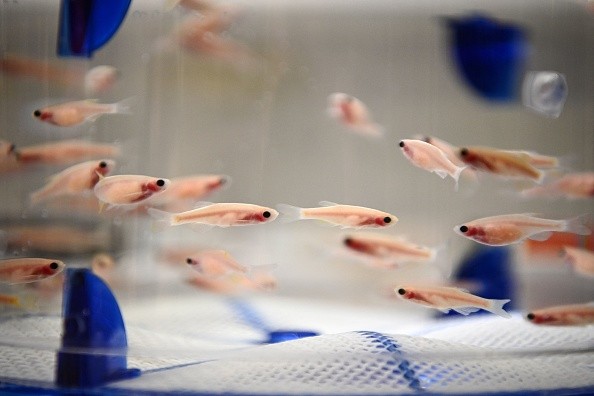Pesticides are chemicals that are used to control pests such as insects, weeds, fungi, and rodents. They are widely used in agriculture, forestry, and public health. It can cause acute and chronic effects, such as poisoning, cancer, birth defects, and reproductive harm.
One of the challenges of assessing the risks of pesticides is to identify which chemicals are responsible for causing harm to humans and wildlife.
This is often difficult because the effects may not be apparent until years or generations later.
Current approaches to testing pesticides are cumbersome, expensive, and rely on animal models that might not accurately represent human circumstances.
To overcome these limitations, two researchers from the UC Davis College of Biological Sciences have developed a novel method that uses glowing fish to detect harmful pesticides.
Genetically modified zebrafish produce red and green fluorescence

The glowing fish are a genetically modified strain of zebrafish (Danio rerio), a small freshwater fish that is native to South Asia and commonly used as a model organism in biomedical research.
The zebrafish share about 70% of their genes with humans, and even more for the genes involved in oogenesis (the production of female egg cells) and spermatogenesis (the production of male sperm cells).
The researchers inserted two genes into the zebrafish genome: one that makes them glow red under a fluorescent microscope when they produce oocytes, and another that makes them glow green when they produce sperm cells.
These genes are controlled by promoters that are specific for the reproductive tissues.
The researchers named these fish GloNad (glowing gonads).
The GloNad fish can be used to screen for chemicals that affect the reproductive system by exposing them to different concentrations of pesticides in water tanks.
The researchers can then observe the changes in the color and intensity of the glow in the fish gonads. If a pesticide interferes with the development or function of the oocytes or sperm cells, it will cause a reduction or an increase in the red or green glow.
Benefits of using fluorescent zebrafish for screening and monitoring pesticides
The advantages of using glowing fish to detect harmful pesticides are manifold.
First, they are faster than using mice or other mammals, which require months or years to complete a test.
The GloNad fish can produce results in weeks or even days.
Second, they are cheaper than using mice or other mammals, which require expensive housing, feeding, and care.
They can be kept in simple water tanks with minimal maintenance.
Moreover, they are more sensitive than using mice or other mammals, which may not show any symptoms until they reach adulthood or reproduce.
It can reveal subtle effects on the reproductive tissues at early stages of development.
The GloNad fish also have ethical and ecological benefits. They reduce the need for using mice or other mammals, which may suffer from pain or stress during testing.
They also reduce the risk of introducing invasive species or pathogens into the environment, as they are contained in closed water tanks.
This zebrafish could also have practical applications for monitoring environmental quality and human health.
They could be used to test water samples from different sources for pesticide contamination. They could also be used to test human urine samples for pesticide exposure.
© 2025 NatureWorldNews.com All rights reserved. Do not reproduce without permission.





